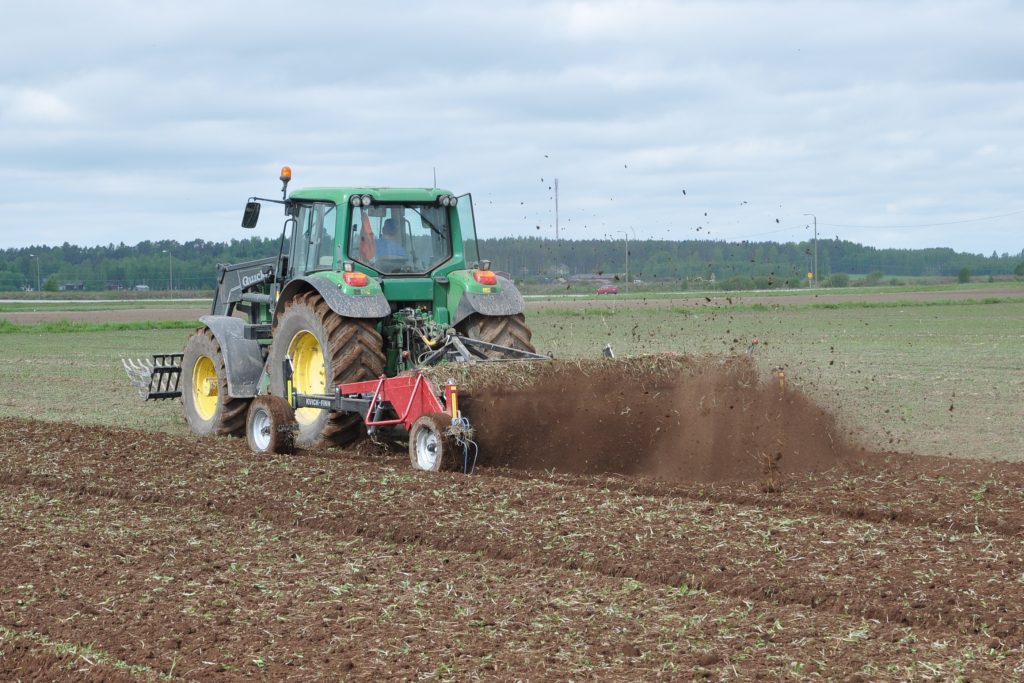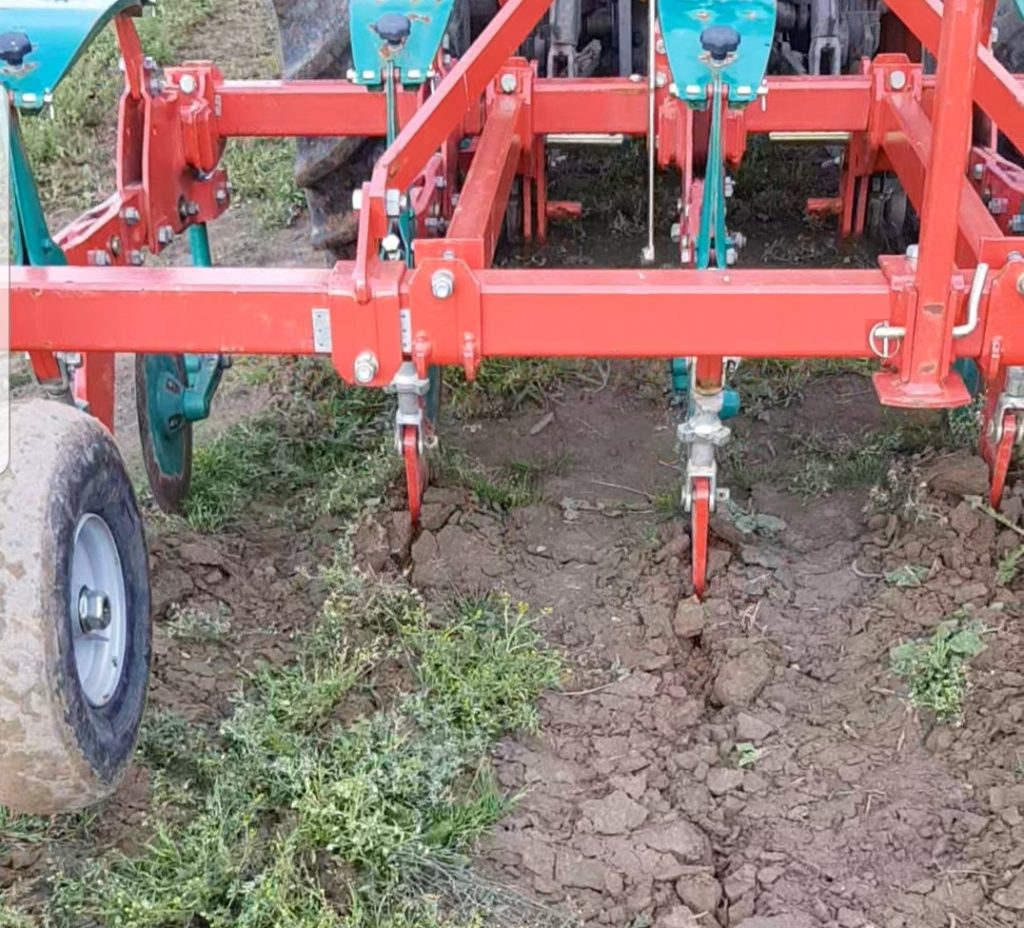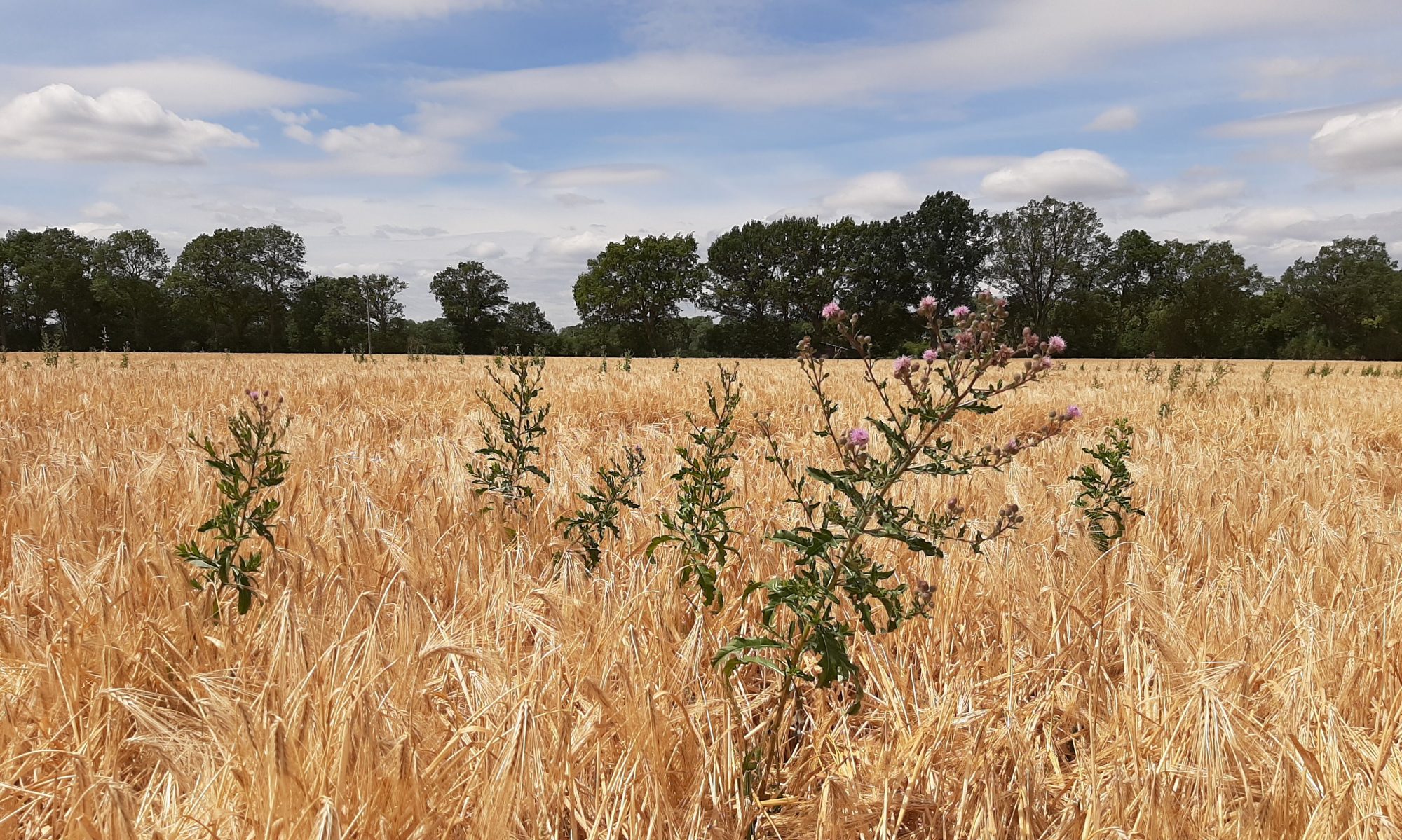
Disturbance: Disturbance treatments include mechanical control and the use of herbicides, e.g., uprooting, dismembering, burying and defoliation of the weeds. By so doing, the emergence, survival and competitiveness of the weeds are restricted. These control methods should aim to be less harmful in terms of soil erosion and environmental concerns, while at the same time to apply them according to the life cycle of weeds (lowest storage of reserves). This may help maximize the efficiency of weed control. The main methods used to reduce the reserves of this plant (excluding inversion tillage) are:
Stubble cultivation: Mainly done with a cultivator, stubble cultivation controls perennial weeds by fragmenting its roots which function as vegetative propagules. Increased burial of root fragments inhibits the emergence of perennial weeds, while root fragments located on the soil surface are subject to desiccation or freezing (depending on weather conditions). As inversion tillage and therefore plough usage is not sustainable there is a need to develop new innovative machines to improve the perennial control through stubble cultivation. In our project, three new types of machines are implemented.

KVIKUP-HARROW: Designed for root removal, this machine works by using gravity to sort soil and plant materials, throwing them into the air by the rotor on the harrow. The underground parts of the weeds will end up on the soil surface where wind, sun and frost kill them.
KVIKFINN-CULTIVATOR: Designed to loosen the soil, it cuts the roots and moves them to the soil surface where wind, sun and frost kill them.

ROOT-CUTTER: Enables below-ground weed control by horizontally cutting the roots, leading ultimately to a depletion of the roots’ storage reserves. The smaller the root fragments, the more energy is required for sprouting shoots to reach the surface.
Harrowing: Harrowing is used to prepare the seedbed to kill weed seedlings or levelling the soil surface. Weed harrowing is usually carried out just before or after sowing, giving the crop a competitive advantage over emerged weed seedlings. This can be important against Cirsium arvense seedlings, as they are very sensitive to mechanical disturbance.
Mowing: Mowing defoliates and cuts the aboveground parts of the plant, leading to a reduction in photosynthesis as photosynthetic assimilates are prevented from being allocated to the roots. This leads to fewer reserves stored in the overwintering roots system, and consequently to a regulation of the shoot population. Cutting the shoots of weeds like C.arvense will break apical dominance and stimulate the emergence of new shoots. This will lead ultimately to a depletion of reserves if the mowing is repeated.
Bio-Herbicides: These herbicides originate from either living organisms or their natural metabolites. They enable weed control without destructing the environment. One example of the bio-herbicides used in this project is pelargonic acid. The acid acts exclusively by contact. They can destroy the cell membranes of the plant epidermis and cause rapid tissue dehydration.
